
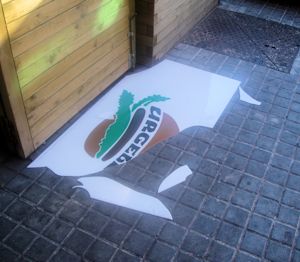
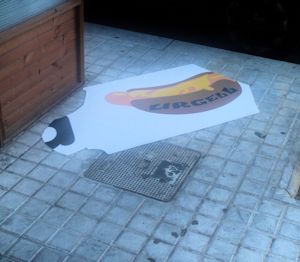
The Daily Diary of a Wandering Restaurateur
Happy 25th Anniversary
Hey, hey, a sunny day! It's cold and very windy out there (90mph winds recorded), but the sun is shining. It's a welcome change from drizzle.



The first order of the day was a pastry run. Not everything is open today because it's St. Stephens Day (and a bank holiday to boot), but at least one of the neighborhood bakeries was doing business. As I made the trek around the corner, I saw the large plastic sign from the Frankfurteria in pieces on the sidewalk. Apparently the wind had somehow torn the big panel right out of its mounting. The hot dog place is closed today so they have no clue what awaits them tomorrow morning. Just another slice of life in the restaurant biz.
[OK, so this isn't much of a story, but we didn't take many pictures today and I wanted to give you something to look at!]
Unless we have to catch a plane, we are seldom in a rush to do anything when we are traveling, so it was the crack of 12:30 when we finally ventured out to soak up a little more of this wonderful city.
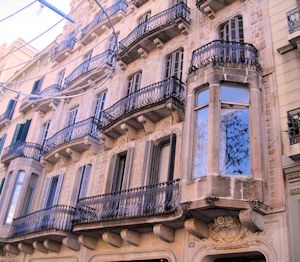
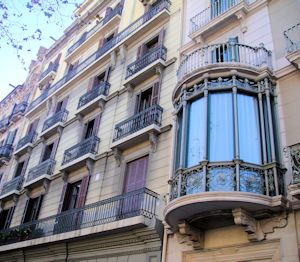
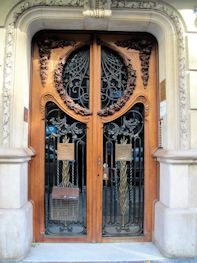
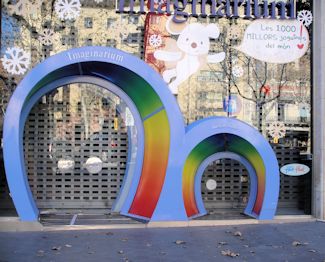
We did a quick one-stop Metro hop to Diagonal, one of the main streets of Barcelona and just started walking down Passeig de Gracia, Barcelona's answer to Fifth Avenue in New York. The architecture has a nice feel to it, with balconies, projecting windows and cool doors. Speaking of cool doors, how about an adult entrance and a separate doorway for kids in a store selling children's stuff? I love the whimsy of that.
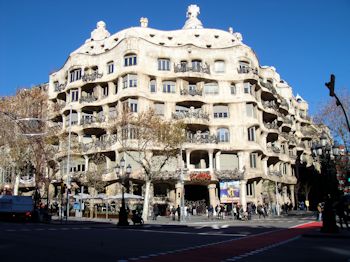
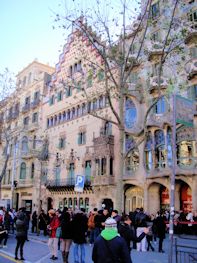
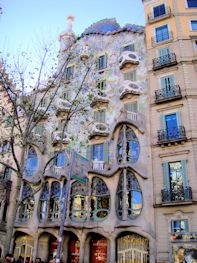
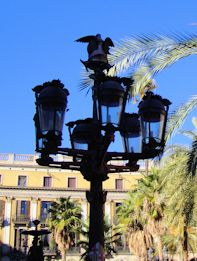
When you think of Barcelona architecture, the name that most often comes to mind is Antoni Gaudi whose works are legend in this city. The Casa Mila is a building he designed and built during the years 1906–1912. Needless to say, it was a controversial design at the time for the bold forms of the undulating stone facade and wrought iron decoration of the balconies and windows.
Architecturally it is considered an innovative work for its steel structure and curtain walls – the façade is self-supporting. Other innovative elements were the construction of underground car parking and separate lifts and stairs for the owners and their servants. In 1984, it was declared a World Heritage site by UNESCO. The building and the roof are open to the public.
A few blocks farther south on Passeig de Gracia is what's known as the Block of Discord because it contains four buildings by four of Barcelona's most important Modernista architects in the early years of the 20th century. The four styles are very different and clash with each other and the neighboring buildings, hence the "discord" name.
The two most often photographed are the Casa Amatiler designed by Josep Puig next to another Gaudi work, the Casa Batilo, now a museum. Again he had almost an undulating look to the facade with balconies that look like masks and organic-looking columns. But for the endless line of tourists waiting to get in, we might have ventured a look inside. Maybe the next trip ...
Gaudi even designed the helmets on top of the lamp posts in the Placa Reial just off La Rambla. His biggest project, though, is La Sagrada Familia, the incredible church that is still twenty years from completion. We hope to see that for ourselves tomorrow.
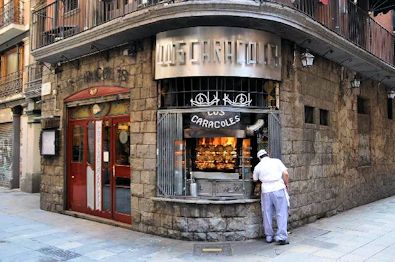
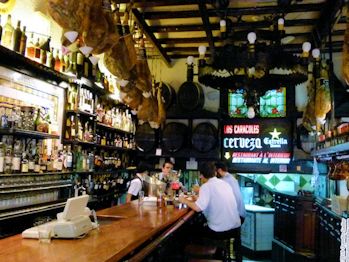
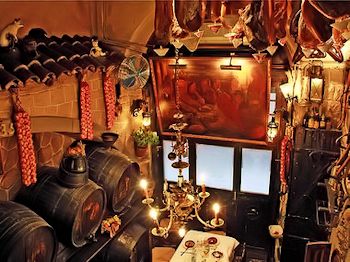
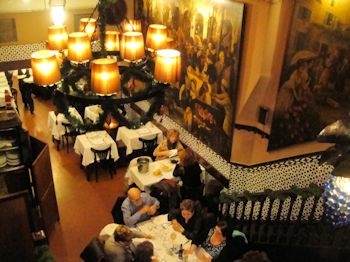
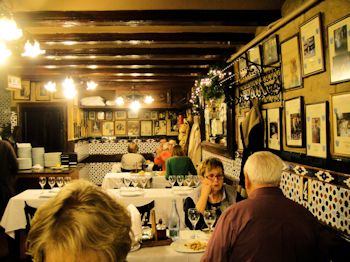
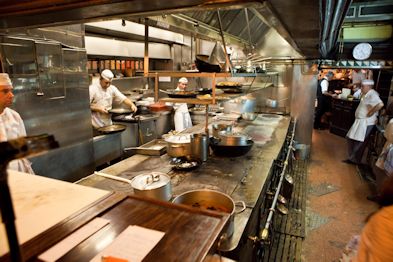
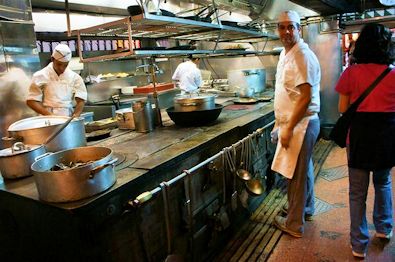
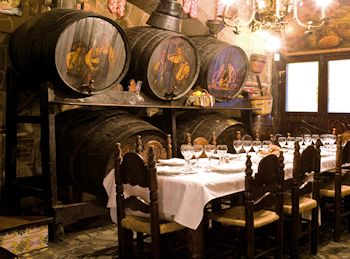
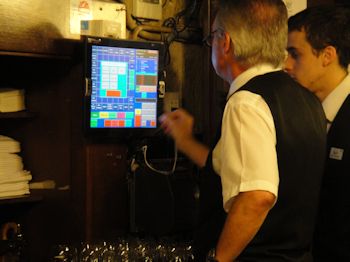
The main task of the day was lunch ... and our 25th anniversary lunch at that. Barcelona is a foodie's dream come true with hundreds of excellent restaurants. The task wasn't to try to pick out the best of these, but to select one that stood out from the rest. That choice was easy: Los Caracoles.
Any place that has been in operation since 1835 must have something figured out and from front to back, this was not just another place to eat. Starting with the outside grill on the corner, you know there's something different going on in here. Entering from the street, you pass through the bar, go down a few steps and literally walk through the cooks to get to the first dining room on the other side.
US health departments might get nervous with an arrangement like this, but I have seen similar set-ups work in San Francisco and Phoenix ... and they generated just as much word-of-mouth there as they do here. The dining areas of the restaurant were on several different levels, connected by narrow stairways. A trip to the restrooms on the third level was an adventure in exploration!
The place stayed full most of the afternoon, primarily with what appeared to be local family groups. This may have had something to do with it being St. Stephens Day or perhaps the Spanish eat late lunches just as they eat late dinners. The food itself was quite good, if a bit pricey. I went for the roasted goat while Margene opted for baby clams and a plate of eggs and potatoes with truffle.
They may have been knocking it out here for 180 years, they aren't stuck in a time warp operationally. Orders were entered and tracked by computer, credit cards were easily handled at the table with hand-held terminals and the kitchen was wired for sound so all the cooks could easily hear the orders as the expediter called them out. It was nice to see technology used to enhance and support an experience rather that to become the experience. Make no mistake, Los Caracoles is all about the experience ... and it made for a memorable anniversary. My thanks to Gus Gregory for recommending the place.
The homework assignment for my restaurant readers is to take a critical look at your own operation in light of the unique nature of Los Caracoles. What are you doing that your guests will just have to tell others about? What is is about your exterior that tells strangers you aren't just another place to eat? What is it about your interior that will cause people to pause and say "Wow?" This isn't an easy assignment to complete effectively, but if you want to create something that can last 150 years, you have to Do the Work! your competitors are not willing to do.
© 2013 Restaurant Doctor